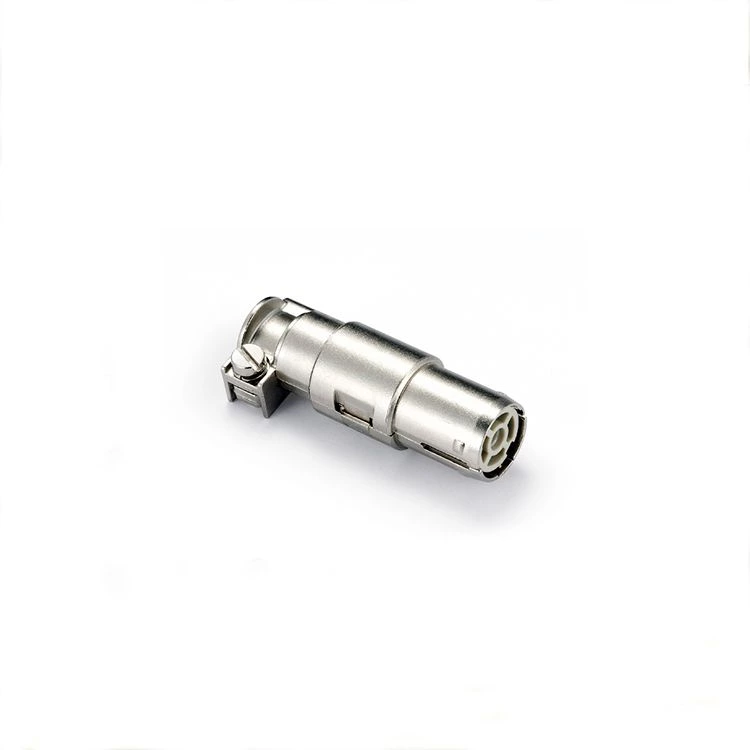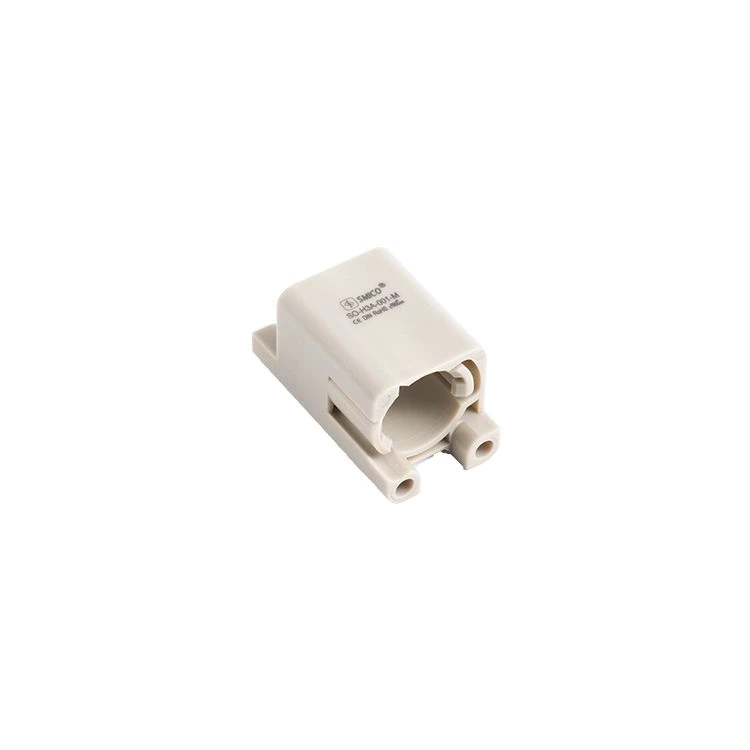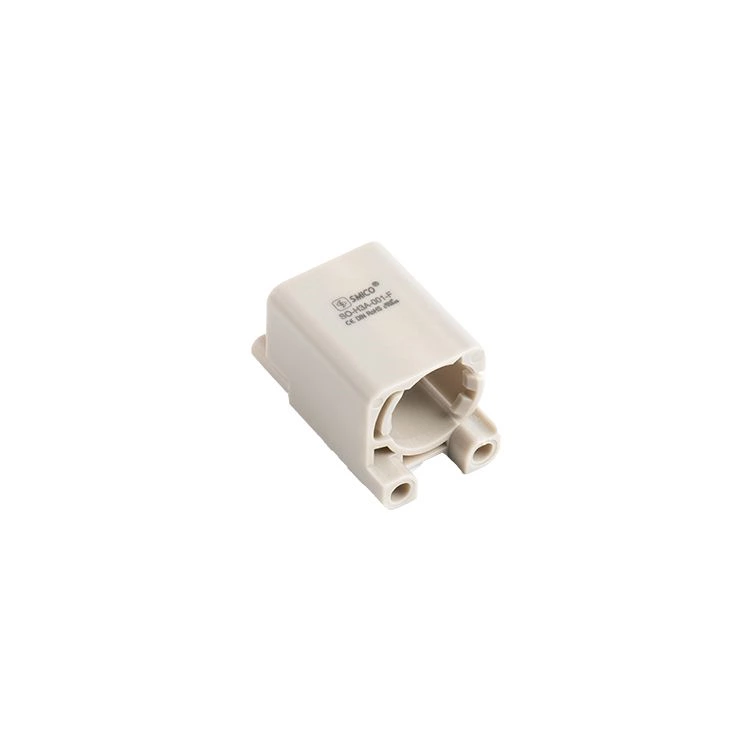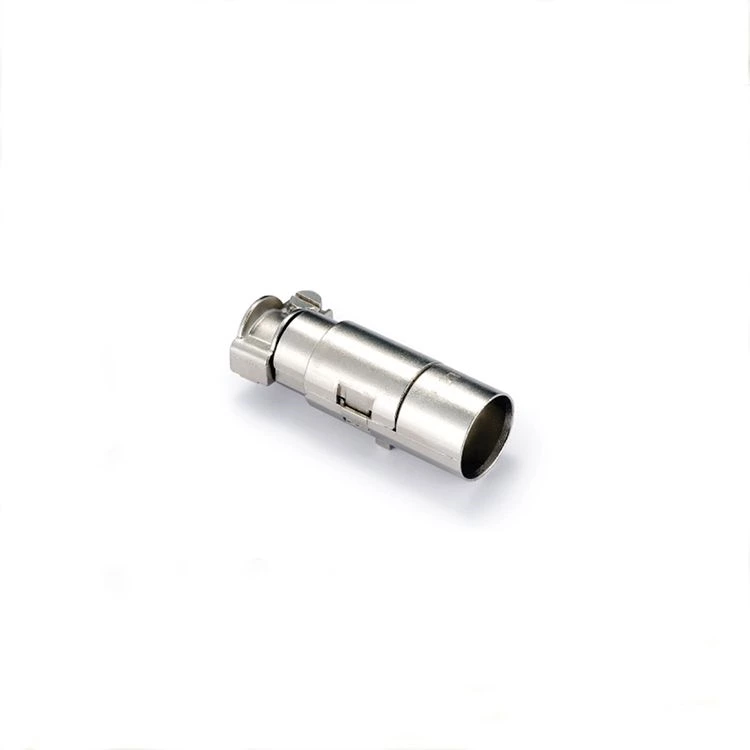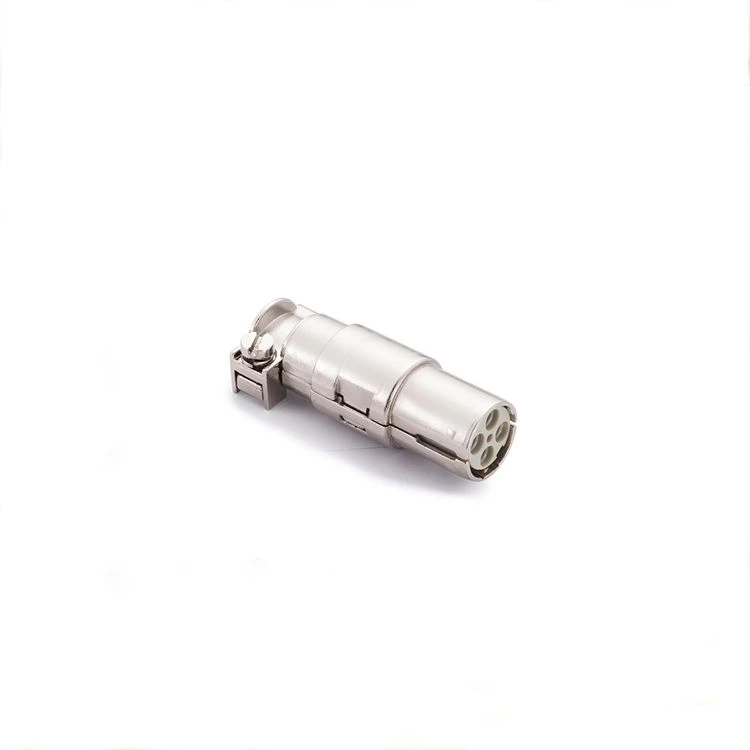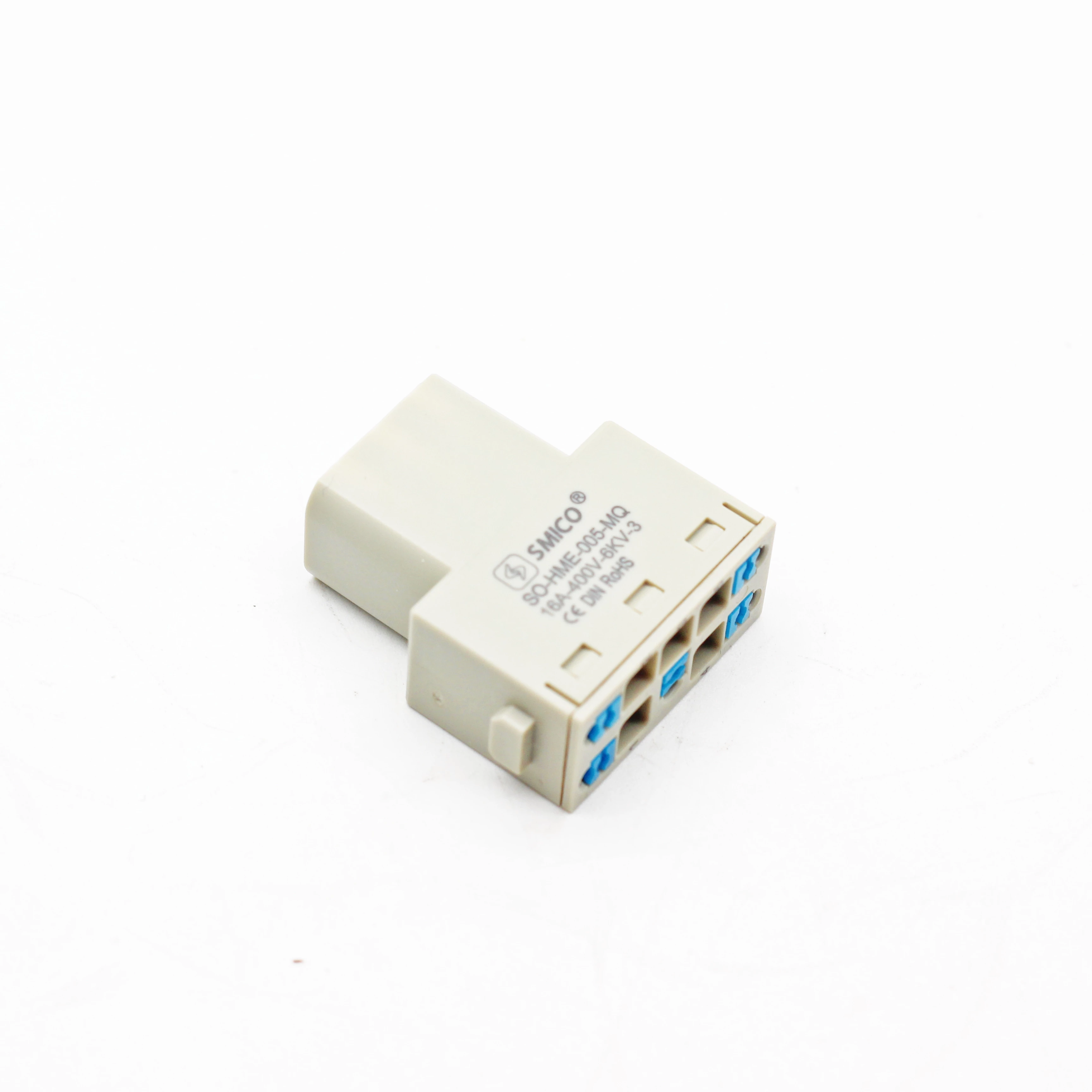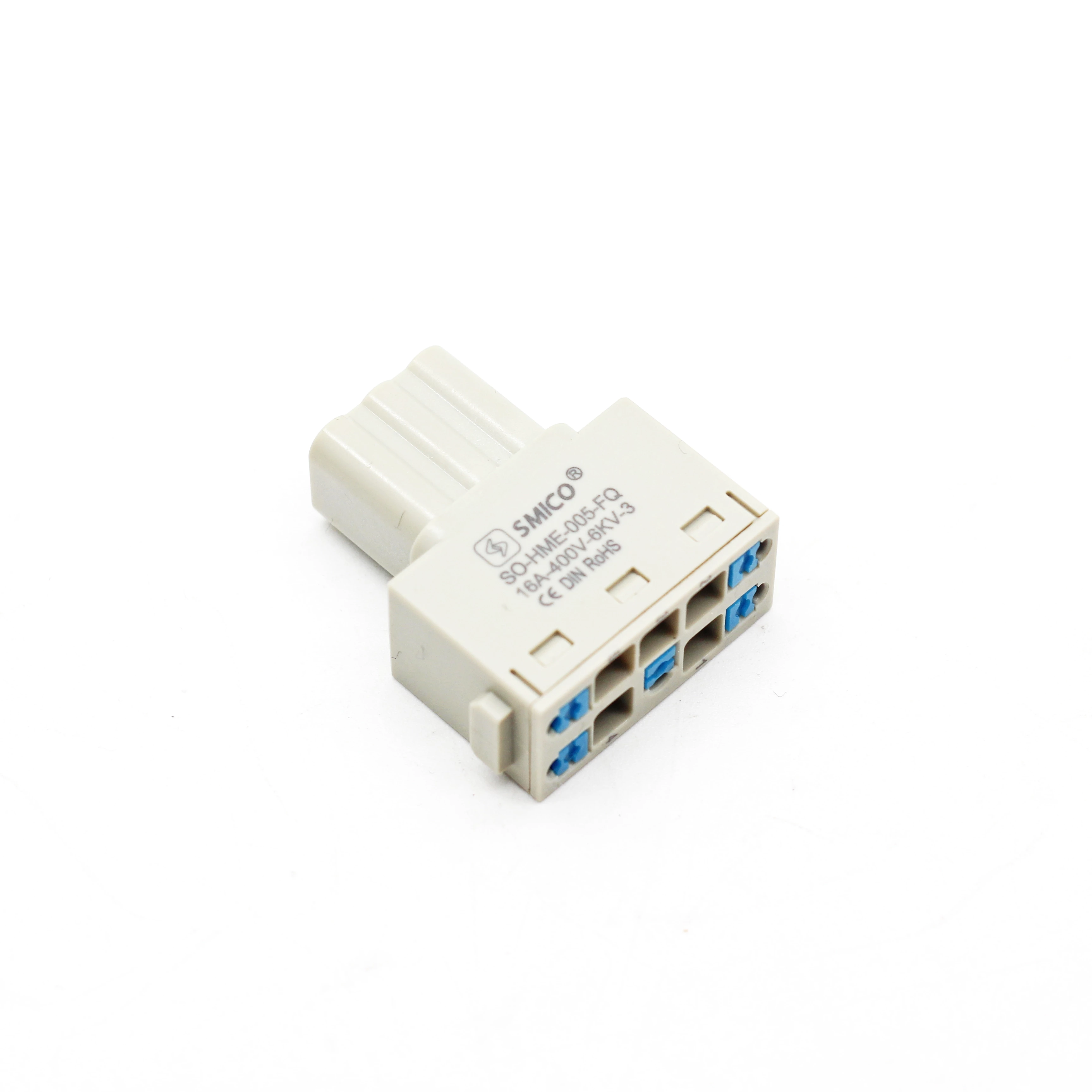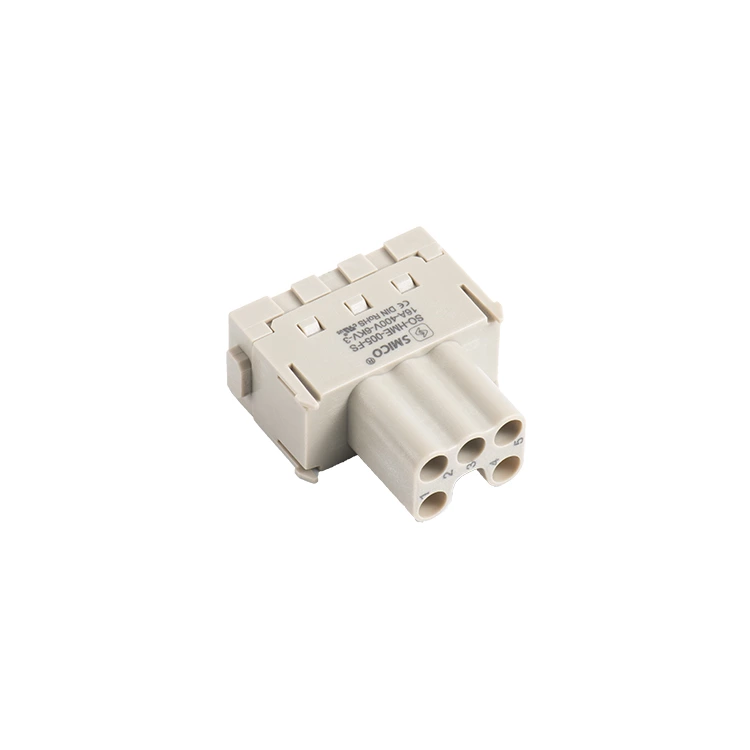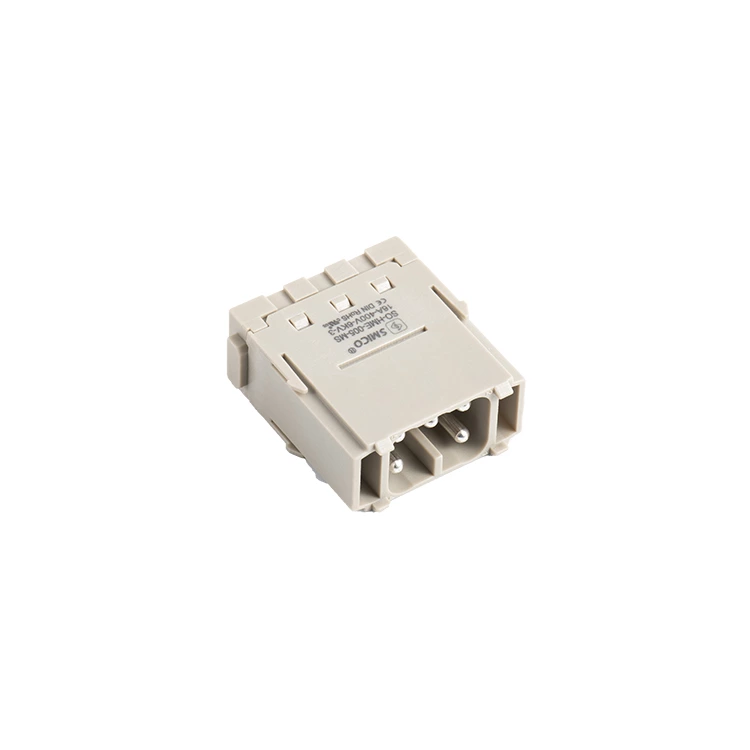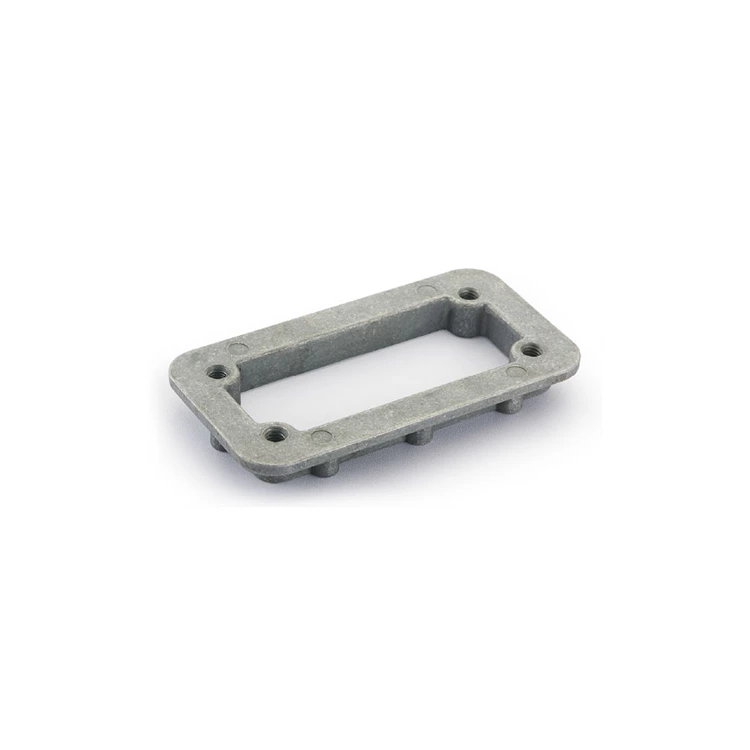Connector Material Knowledge
1. Commonly used materials for Heavy Duty Connector insulators
Usually there are: PBT, NYLON, ABS, PC, LCP and other materials as shown in Appendix 1, but in principle, materials with better flame resistance are used.
a.PBT material:
Generally, PBT material is added with 20-30% glass fiber, which has the ability to resist cracking, impact, and electricity. It has good wear resistance, low friction coefficient, good self-lubricating effect, and good oil and chemical resistance. It has good dielectric strength under high temperature and high humidity. Its shrinkage rate is between 0.6% and 3.0%, and its temperature resistance is about 230°C. Good formability and flame resistance. It is a commonly used rubber material for connector products.
b.NYLON66, NYLON6T, PC, LCP materials:
Its shrinkage rate is 1.0%-0.3%, and its temperature resistance is higher than PBT. Commonly used NYLON66 has a temperature resistance of 260℃--280℃, NYLON6T has a temperature resistance of 280℃--300℃, and LCP has a temperature resistance of 290℃--320℃. However, it has high water absorption and is generally used for products with high temperature resistance and less PITCH (such as SMD, HOUSING, PLCC, etc.)
C. ABS material:
It has good impact toughness, oil resistance, wear resistance, easy molding, good hardness, good rigidity, and temperature resistance of about 100°C. It is generally used in auxiliary products in connectors.
2. Common defects and causes of injection molding
Common molding defects include the following: black spots or black liquid on plastic parts, rough surface, overflow, incomplete plastic molding, bubbles or burnt, deflated shapes, stitching lines or plastic parts shrinking in the mold, etc. . The main reasons are divided into three parts: factors of the injection molding machine, factors of the mold, and factors of the rubber material.
3. Composition and performance of connector contacts
Joint material: The metal joint material of the plug is generally brass. However, when the number of plugs and pulls is extremely high and the life span is long, phosphor bronze, beryllium copper, etc. can be used. The following is an introduction to the types and characteristics of copper materials in the current industry.
1. Brass---an alloy of copper and zinc. The color varies depending on the zinc content.
a. Brass ----- containing 25~35% zinc, suitable for processing at room temperature.
b. Brass ----- containing 35% to 45% tin, suitable for normal temperature processing. All copper plates and copper rods sold on the market belong to this category.
2. Bronze - an alloy of copper and tin, its color varies depending on the tin content.
Generally speaking, copper alloys other than brass are called bronze.
